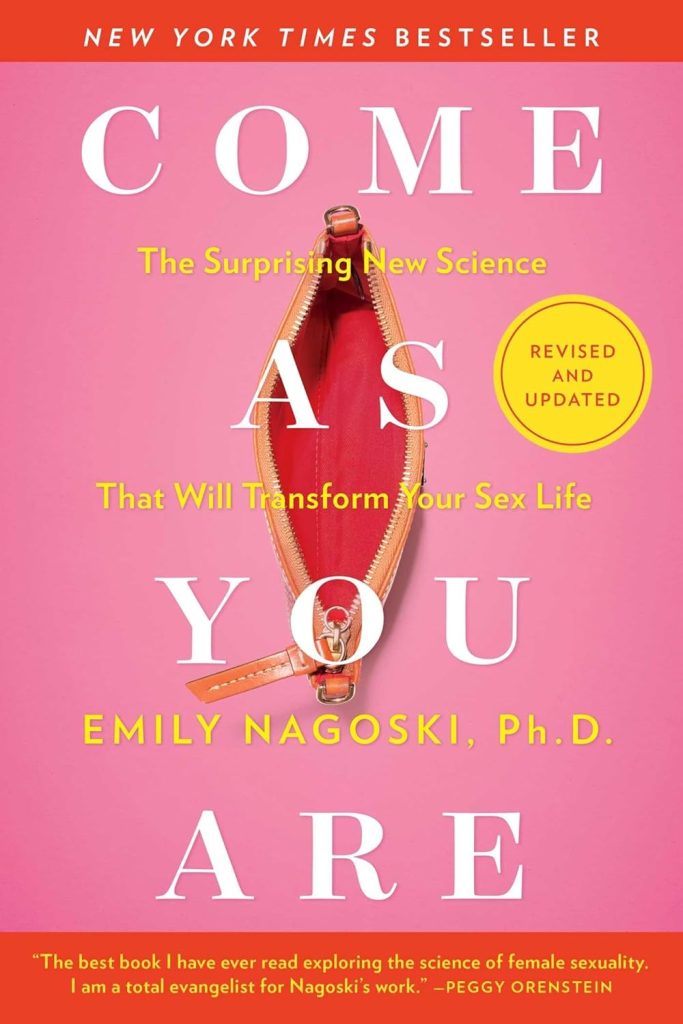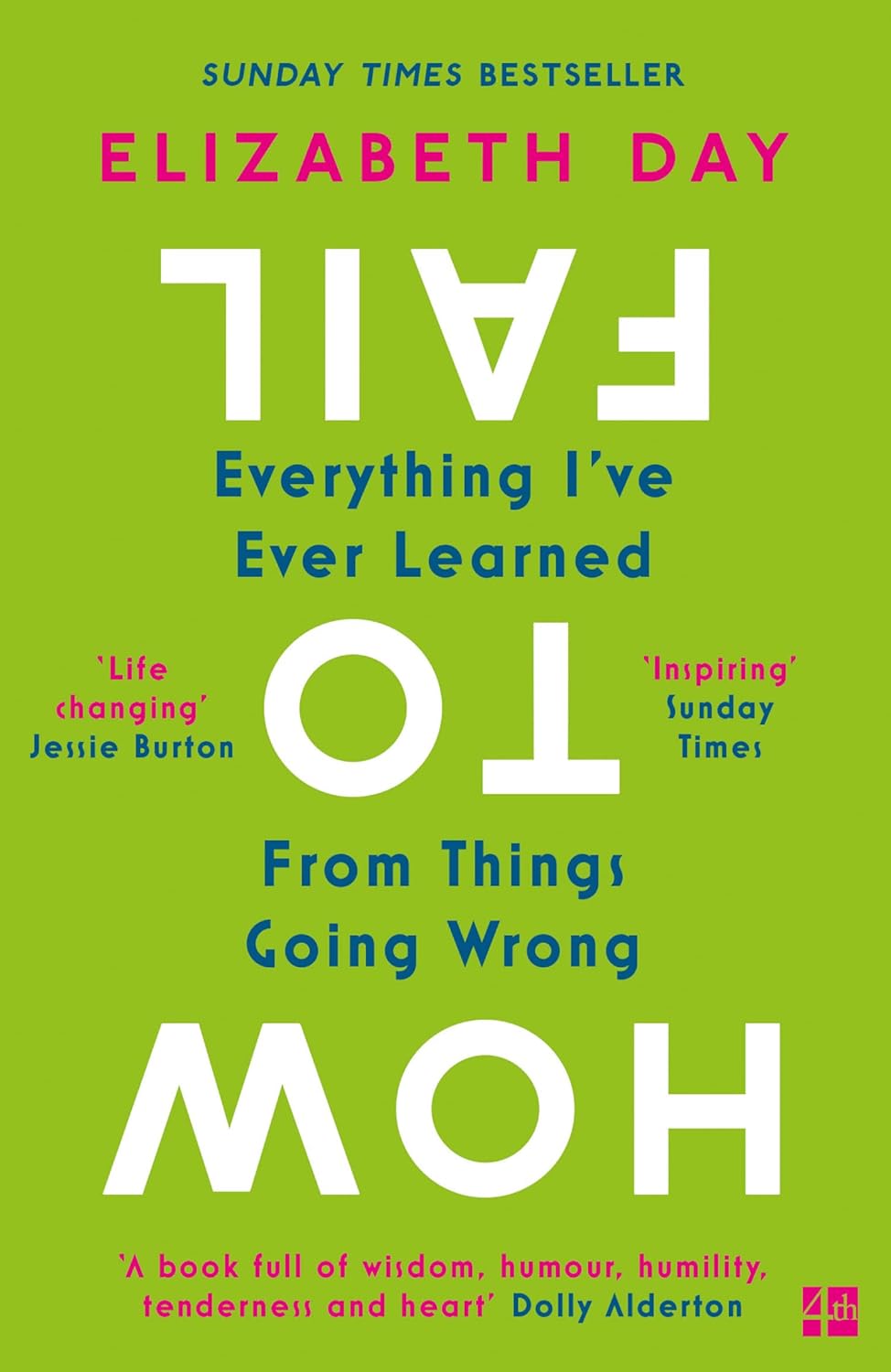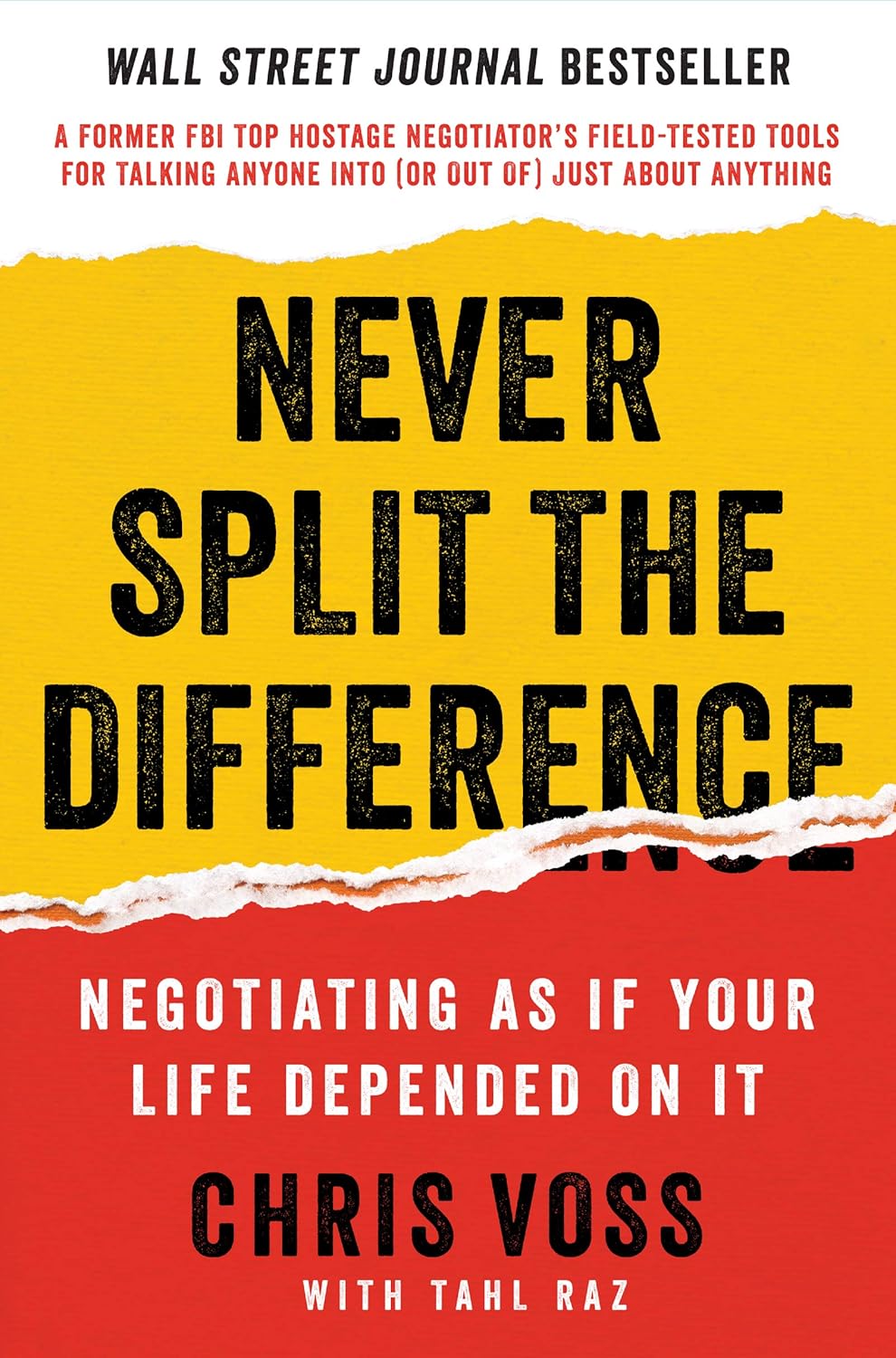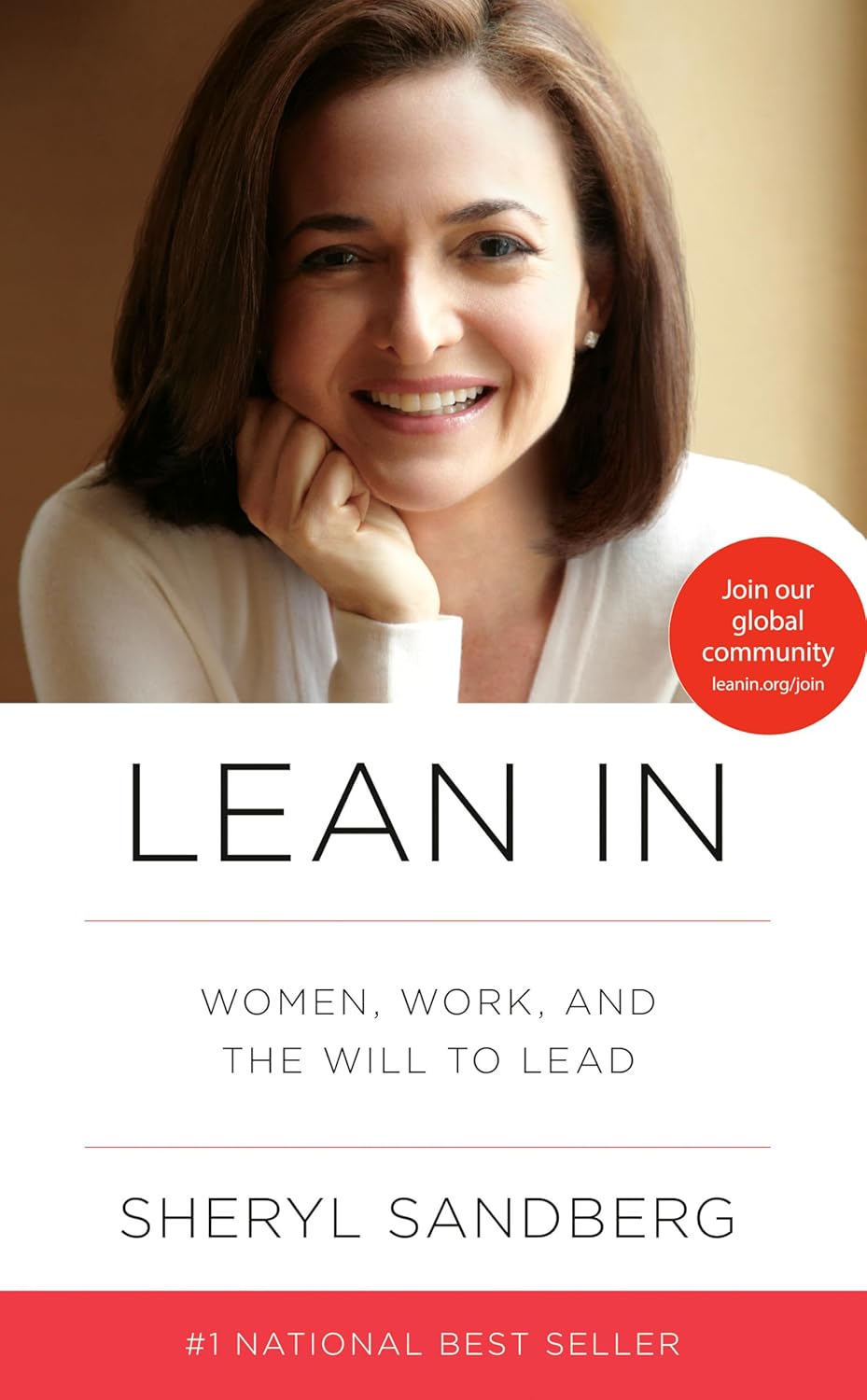
Buy The Book
Chapter
- ✦ Introduction: Yes, You Are Normal
- ✦ Anatomy: No Two Alike
- ✦ The Dual Control Model: Your Sexual Personality
- ✦ Context: And the “One Ring” in Your Emotional Brain
- ✦ Emotional Context: Sex in a Monkey Brain
- ✦ Cultural Context: A Sex-Positive Life in a Sex-Negative World
- ✦ Arousal: Lubrication Is Not Causation
- ✦ Desire: Actually, It’s Not a Drive
- ✦ Orgasm: The Fantastic Bonus
- ✦ Meta-Emotions: The Ultimate Sex-Positive Context
- ✦ Conclusion: You Are the Secret Ingredient
Come as You Are: The Surprising New Science that Will Transform Your Sex Life

About
*Come as You Are: The Surprising New Science That Will Transform Your Sex Life* is a groundbreaking book by Emily Nagoski, a renowned sex educator and author with a PhD in health behavior and a focus on human sexuality. Drawing from extensive research, Nagoski challenges common misconceptions about female sexuality, emphasizing that every woman’s sexual response is unique and normal.
The book introduces the dual control model of sexual response, which posits that sexual arousal is governed by both an “accelerator” (the Sexual Excitation System) and “brakes” (the Sexual Inhibition System). This framework helps readers understand why desire can fluctuate and highlights the importance of context in sexual experiences. Nagoski also addresses issues like responsive desire and arousal non-concordance, encouraging women to embrace their bodies and desires without shame.
Through personal anecdotes and scientific insights, *Come as You Are* empowers readers to cultivate a positive relationship with their sexuality, ultimately transforming their sexual lives.

Spark
Learn
Review
✦ Introduction: Yes, You Are Normal
Being a sex educator means constantly fielding questions about sexuality, desire, and the intricacies of human experience. I’ve encountered inquiries ranging from the nature of orgasm to concerns about body image during intimate moments. Central to these questions is a common thread: the quest for validation—“Am I normal?” The answer, nearly always, is yes. This book serves as a comprehensive resource, offering insights that can change lives by combining scientific research with personal narratives. It’s about empowering individuals to embrace their sexuality and understand their bodies without shame.
The narrative unfolds through the lens of diverse experiences, highlighting that every woman’s journey is unique yet fundamentally human. The goal is to demystify sexual functioning and provide clarity around common misconceptions that often lead to feelings of inadequacy or dysfunction. By understanding the science behind sexual response, readers can cultivate a healthier relationship with their bodies and desires. This journey begins with recognizing that normalcy in sexuality encompasses a wide range of experiences and feelings.
As we navigate through the chapters, we will explore anatomy, emotional context, cultural influences, and the mechanics of arousal and desire. Each section aims to provide practical knowledge and tools for self-discovery, ultimately fostering confidence and joy in one’s sexual identity.
✦ Anatomy: No Two Alike
The exploration of female anatomy reveals that no two bodies are identical; each is a unique expression of individuality. The chapter begins by emphasizing that all women share the same basic anatomical components but differ in their organization and appearance. This diversity should be celebrated rather than stigmatized.
Understanding one’s own anatomy is crucial for embracing sexuality fully. For instance, the clitoris is often misunderstood; it extends beyond what is visible, comprising internal structures that contribute to sexual pleasure. By demystifying these parts, I encourage readers to view their bodies with appreciation rather than judgment.
Cultural narratives often impose unrealistic standards on female anatomy, leading many to feel inadequate or abnormal. This chapter aims to dismantle those myths by presenting scientific truths about genital diversity. It stresses that variations in size, shape, and color are entirely normal and beautiful.
Through personal anecdotes and educational insights, the chapter encourages readers to engage with their bodies positively. It invites women to explore their anatomy using mirrors or touch, fostering a sense of ownership and empowerment over their sexuality. Ultimately, recognizing that all bodies are unique yet equally valid lays the foundation for a healthier self-image and a more fulfilling sexual experience.
✦ The Dual Control Model: Your Sexual Personality
Understanding sexual response requires exploring the dual control model, which posits that arousal is governed by two systems: an accelerator and brakes. This chapter introduces these concepts as fundamental components of sexual functioning.
The accelerator responds to stimuli that promote arousal—sights, sounds, sensations—while the brakes inhibit arousal based on contextual factors such as stress or discomfort. Recognizing how these systems interact helps clarify why individuals may experience fluctuations in desire or arousal.
The chapter emphasizes that everyone has both an accelerator and brakes; however, sensitivity varies from person to person. For some, the accelerator may be highly responsive while the brakes are less active, leading to heightened arousal in various contexts. Conversely, others may have sensitive brakes that dampen desire even in favorable situations.
By understanding this model, readers can better navigate their sexual experiences and identify potential barriers to pleasure. The chapter also discusses how external factors—such as relationship dynamics or emotional states—can influence these systems. This knowledge empowers individuals to create environments conducive to sexual enjoyment by addressing inhibiting factors while enhancing stimulating ones.
Ultimately, this chapter lays the groundwork for understanding one’s unique sexual personality and equips readers with tools to foster healthier relationships with themselves and their partners.
✦ Context: And the “One Ring” in Your Emotional Brain
Context plays a pivotal role in shaping sexual experiences; this chapter delves into how emotional states and environmental factors influence arousal and desire. It highlights that sensations do not exist in isolation but are deeply intertwined with personal history and emotional context.
The chapter begins by examining how stress responses can interfere with desire, often leading individuals to feel disconnected from their partners or themselves during intimate moments. Understanding this connection allows readers to recognize when external pressures may be impacting their sexual functioning.
Moreover, it emphasizes the importance of creating a supportive environment for intimacy. Factors such as trust, comfort, and emotional safety significantly enhance sexual responsiveness. The narrative encourages readers to reflect on their own experiences—what contexts have fostered positive sexual encounters? What situations have inhibited desire?
By identifying these patterns, individuals can take proactive steps toward cultivating environments that support healthy sexual expression. The chapter also discusses how societal messages about sex can create internal conflicts that further complicate arousal.
Ultimately, understanding context empowers readers to take control of their sexual experiences by recognizing how emotions and surroundings shape desire. This awareness fosters deeper connections with partners while promoting self-acceptance in one’s unique sexual journey.
✦ Emotional Context: Sex in a Monkey Brain
Emotional context significantly impacts sexual functioning; this chapter explores how feelings of stress or anxiety can inhibit desire while love fosters connection. It examines the intricate relationship between emotions and sexuality through various lenses.
The chapter begins by discussing the stress response cycle—how fight-or-flight reactions can overshadow intimate moments. Stress often leads individuals to withdraw from pleasurable experiences due to fear or discomfort associated with vulnerability. Recognizing this pattern allows readers to address emotional barriers proactively.
Conversely, positive emotions such as love and attachment enhance intimacy and arousal. The narrative emphasizes how secure attachments can create safe spaces for exploration and connection within relationships. Understanding one’s attachment style provides insight into how emotional dynamics influence sexual experiences.
Additionally, the chapter highlights strategies for managing emotional responses during intimacy—mindfulness techniques can help individuals remain present rather than overwhelmed by anxiety or self-doubt.
By integrating emotional awareness into discussions of sexuality, this chapter empowers readers to navigate their feelings effectively while fostering deeper connections with partners. Ultimately, embracing emotional context enriches sexual experiences by promoting authenticity and vulnerability within intimate relationships.
✦ Cultural Context: A Sex-Positive Life in a Sex-Negative World
Cultural narratives surrounding sex often perpetuate negative beliefs about women’s bodies and desires; this chapter addresses societal messages that contribute to feelings of shame or inadequacy regarding sexuality. It advocates for self-compassion while encouraging readers to challenge harmful stereotypes.
The narrative begins by exploring three primary messages women receive about their sexuality: they should be ashamed of their desires; they must conform to unrealistic standards of beauty; they should prioritize others’ pleasure over their own enjoyment. These messages create barriers that inhibit authentic expression of sexuality.
By fostering self-acceptance through awareness of cultural influences on body image and desire, readers are encouraged to reclaim ownership over their sexuality without shame or fear. The chapter introduces concepts such as Health at Every Size (HAES) as tools for promoting body positivity regardless of societal standards.
Furthermore, it discusses cognitive dissonance—the internal conflict arising when personal beliefs clash with societal expectations—and offers strategies for navigating these challenges effectively.
Ultimately, this chapter empowers readers to cultivate a sex-positive mindset despite external pressures while embracing their individuality within broader cultural contexts. By challenging negative narratives surrounding female sexuality, individuals can enhance their overall well-being while fostering healthier relationships with themselves and others.
✦ Arousal: Lubrication Is Not Causation
Arousal is often misunderstood; this chapter clarifies that genital response does not always equate to desire or enjoyment. It introduces the concept of arousal nonconcordance—where physical signs of arousal do not align with emotional readiness or interest.
The narrative begins by discussing common misconceptions surrounding lubrication—the idea that being “wet” automatically indicates readiness for intercourse is misleading. Many women experience physiological responses without feeling mentally prepared for intimacy; understanding this distinction helps demystify common myths about female sexuality.
This chapter emphasizes that recognizing arousal nonconcordance allows individuals to engage more authentically with their bodies during intimate moments without pressure or expectation regarding specific outcomes like orgasm or penetration.
Moreover, it discusses how external factors such as stress or anxiety can impact physical responses during intimacy—acknowledging these influences fosters greater compassion toward oneself when navigating challenges related to arousal.
Ultimately, this chapter encourages readers to embrace their unique experiences without judgment while promoting open communication about desires between partners. By reframing discussions around arousal away from rigid expectations toward more fluid understandings rooted in individual experiences, individuals can cultivate deeper connections both with themselves and others during intimate encounters.
✦ Desire: Actually, It’s Not a Drive
Desire is framed not as an innate drive but as a complex interplay of context, emotions, and individual experiences; this chapter explores responsive desire—where interest emerges in response to specific situations rather than spontaneously arising from within oneself.
The narrative begins by challenging traditional notions equating desire solely with spontaneous urges; instead, it highlights how many women experience responsive desire triggered by erotic contexts rather than inherent cravings for sex at all times.
Understanding responsive desire shifts perceptions around what constitutes “normal” levels of interest in sex—recognizing that fluctuations are natural allows individuals greater freedom in exploring intimacy without pressure or guilt associated with perceived inadequacies regarding libido levels.
This chapter also discusses external factors influencing desire—including stressors related to work-life balance or relationship dynamics—and emphasizes strategies for enhancing erotic contexts conducive toward fostering interest over time through communication between partners about needs/preferences/expectations surrounding intimacy.
Ultimately encouraging readers toward embracing responsive desires empowers them toward cultivating fulfilling sexual lives based on authenticity rather than societal expectations regarding frequency/intensity/quality associated with traditional definitions surrounding “healthy” libido levels—a journey toward self-discovery rooted firmly within personal agency over one’s own body/sexuality/desires unfolds here!
✦ Orgasm: The Fantastic Bonus
Orgasm is often viewed as the ultimate goal of sexual activity, but this chapter reframes it as a delightful bonus rather than an obligatory endpoint. The exploration begins by acknowledging that every woman’s experience of orgasm is unique, with variations in intensity, duration, and even the sensations involved. This diversity is celebrated, emphasizing that there is no single “right” way to experience orgasm.
Throughout the chapter, I discuss the phenomenon of arousal nonconcordance, which illustrates that physical signs of arousal—such as lubrication or swelling—do not always correlate with the emotional readiness for sex or the ability to achieve orgasm. Understanding this concept can alleviate pressure and anxiety surrounding sexual performance, allowing individuals to focus on pleasure rather than meeting specific expectations.
The chapter also addresses common challenges women face regarding orgasm, such as difficulty achieving climax or feeling disconnected during sex. Practical strategies are offered to enhance sexual pleasure, including mindfulness techniques and communication with partners about desires and needs. By fostering an open dialogue about what feels good, individuals can create a more satisfying sexual experience.
Moreover, I explore the idea that orgasm can be influenced by various factors, including emotional connection, physical comfort, and even hormonal fluctuations. This holistic approach encourages readers to view their sexual experiences through a lens of curiosity and exploration rather than judgment. Ultimately, this chapter aims to empower women to embrace their unique pathways to pleasure and recognize that while orgasm is wonderful, it is just one part of a rich tapestry of sexual experience.
✦ Meta-Emotions: The Ultimate Sex-Positive Context
Meta-emotions—our feelings about our feelings—play a crucial role in shaping our sexual experiences. This chapter delves into how these emotions influence our ability to engage fully in intimate moments. Positive meta-emotions foster trust and connection, while negative meta-emotions can create barriers to arousal and desire.
The narrative begins by discussing how societal messages about sexuality often lead individuals to feel shame or guilt regarding their desires. These feelings can inhibit sexual enjoyment and create a cycle of self-doubt. By recognizing and addressing these meta-emotions, readers can begin to shift their perspectives on sexuality from one of fear or shame to one of acceptance and joy.
I introduce practical strategies for cultivating positive meta-emotions, such as practicing self-compassion and engaging in open communication with partners about insecurities and desires. This dialogue helps build trust and intimacy, allowing individuals to feel more secure in their sexual relationships.
Additionally, the chapter emphasizes the importance of nonjudgmental awareness—acknowledging feelings without labeling them as good or bad. This approach encourages individuals to explore their emotions without fear of judgment, creating space for growth and understanding within their sexual lives.
Ultimately, this chapter aims to empower readers by illustrating how embracing positive meta-emotions can significantly enhance sexual satisfaction. By fostering a supportive internal dialogue and cultivating trust with partners, individuals can navigate their sexual experiences with greater confidence and fulfillment.
✦ Conclusion: You Are the Secret Ingredient
The journey through understanding female sexuality culminates in the realization that each individual holds the key to their own pleasure and satisfaction. Embracing one’s unique anatomy while gaining insights into personal desires creates pathways toward achieving fulfilling sexual lives free from shame or fear. The exploration emphasizes that understanding one’s body is essential for cultivating a healthy relationship with sexuality.
Throughout this book, I have aimed to dismantle myths surrounding female sexuality by providing scientific insights alongside personal stories of women navigating their own experiences. The message remains clear: every woman’s journey is valid and worthy of celebration. By recognizing the diversity within human sexuality—both anatomically and experientially—readers are encouraged to embrace their bodies without judgment.
As we conclude this exploration, it’s vital to acknowledge that confidence in one’s sexuality leads to deeper connections with oneself and others. The insights shared throughout this narrative serve as tools for empowerment, encouraging readers to celebrate their bodies and desires without shame or fear.
Ultimately, confidence rooted in understanding oneself fosters deeper connections enriching overall quality experienced throughout life. By embracing individuality within broader cultural contexts, individuals can enhance their overall well-being while fostering healthier relationships with themselves and others. Remember: you are the secret ingredient in your own sexual journey—embrace it fully!
For People
– Individuals seeking to understand their own sexual experiences
– Couples looking to enhance intimacy and communication
– Health professionals interested in women’s sexual health
– Educators teaching human sexuality and relationships
– Anyone curious about the science of sexual response and desire
Learn to
– Improved understanding of female sexual anatomy and response
– Insights into the dual control model of sexual arousal
– Strategies for overcoming sexual shame and stigma
– Enhanced communication skills regarding sexual needs and desires
– Empowerment to embrace individual sexual experiences as normal and valid









